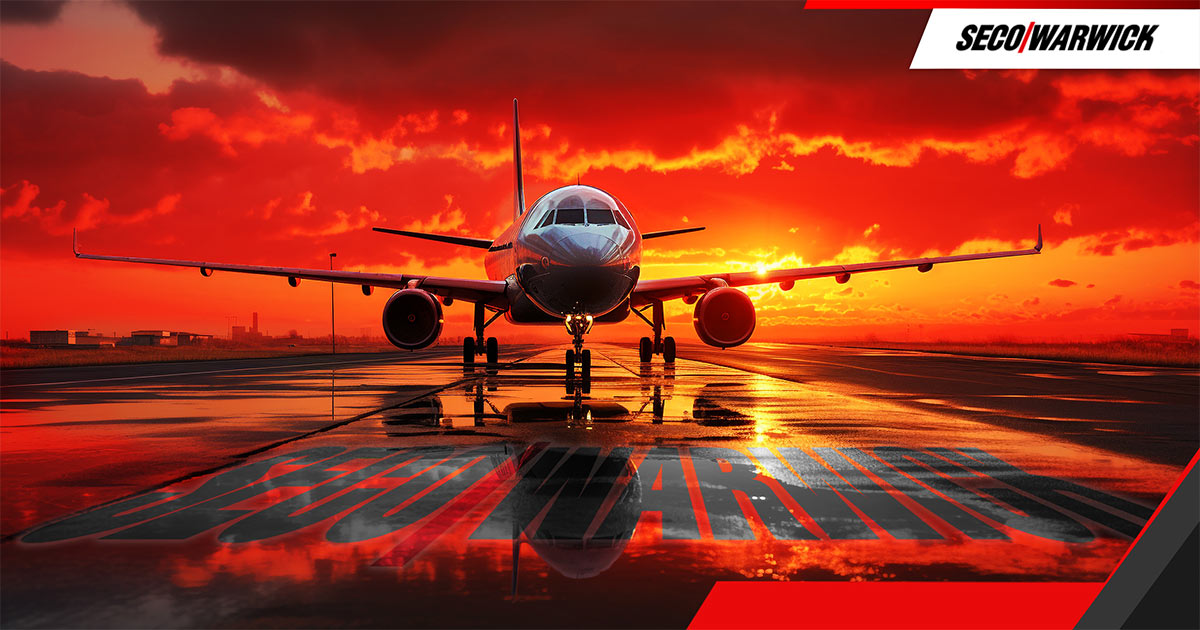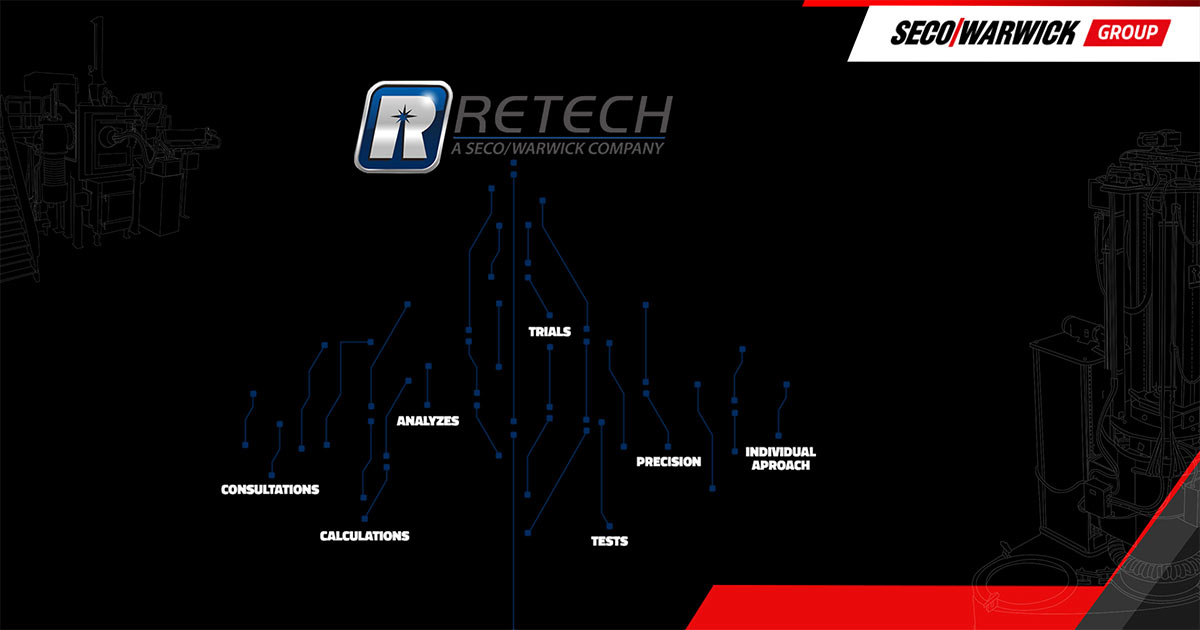SECO/WARWICK is one of the key partners in the aviation sector. In 2024, the Group delivered dozens of solutions contributing to the increase in the worldwide production of aviation components.
Despite the looming global crisis, the aviation market, valued at $300-400 billion in 2021, is expected to grow to $500-600 billion by 2031, indicating its continuous expansion despite challenges such as the COVID-19 pandemic, and tightening of environmental regulations.
The aviation industry is highly concentrated, with the main revenues generated by a small number of large manufacturers. Key barriers to entry include high research and development costs, certification requirements, and complex production processes. In response to these challenges, the market is moving towards consolidation, creating an oligopolistic model. Only the largest companies can afford to invest in modern technologies, making collaboration in the form of a consortia essential for implementing innovative projects.
“We supply technologically advanced industrial furnaces to leading industrial sectors worldwide. 70% of SECO/WARWICK’s solutions are delivered to demanding industries and brands. We collaborate with almost all the key players in this market. It can be said that SECO/WARWICK has a modest share in the vast majority of companies engaged in aircraft machinery production. We work for both civil and military aviation. For this industry, we provide solutions for the production of, among other components, aircraft engine blades, heat exchangers, aircraft skins, landing gear, struts, and brakes. Among the most popular solutions for the aviation sector last year were single and multi-chamber vacuum furnaces, as well as equipment for melting metals and alloys using plasma and electron beam technology, and devices for producing high-quality precision turbine blade castings — VIM and JetCaster,” said Sławomir Woźniak, CEO of the SECO/WARWICK Group.
Technological Challenges in the Production of Aviation Components
The production of aviation components requires extremely precise processes, including advanced heat treatment of metals. In 2024, there is an increasing role of advanced technologies supporting production in the aviation industry.
“More and more vacuum solutions are being introduced to the aviation industry. These furnaces allow for precise control of parameters, resulting in uniform component quality. Repeatability, high quality, and compliance with aviation standards are the requirements we must meet every time we deliver equipment for the production of aviation components,” commented Maciej Korecki, Vice President of the Vacuum Furnace Segment at SECO/WARWICK.
The growing importance of computer simulations and artificial intelligence is becoming more evident, allowing for the optimization of heat treatment processes and the prediction of material properties. SECO/WARWICK offers the FURNACE/PLUS platform, which includes services such as SECO/PREDICTIVE — an advanced, intelligent device control system that detects potential failures before they occur, and SENERGY, which helps optimize media consumption.
In-house Laboratories Support Aviation Technology
SECO/WARWICK is one of the few companies producing metal heat treatment equipment that has its own metallographic laboratory and two R&D centers, enabling partners to test new solutions and set standards for innovation and production efficiency.
“Our partners in the aviation sector want to optimize production while maintaining excellent quality. Together, we develop technology by creating innovative and efficient devices to achieve better technical and quality parameters while reducing production costs. Many implemented solutions have also contributed to reducing the carbon footprint generated by aviation manufacturers. This is particularly important in the era of strict emission standards. We conduct our own research, but we also supply our equipment to research centers or R&D departments that are also looking for innovations contributing, among other things, to the reduction of the carbon footprint of industrial machinery. Others use these essential resources to search for material solutions that will improve the components that they produce. Most often, our partners use specially adapted Vector furnaces for this purpose. One of these units will be used this year, not in serial production, but in development processes, contributing to the creation of innovative solutions for the aviation industry,” said Maciej Korecki, Vice President of the Vacuum Furnace Segment at SECO/WARWICK
Key Directions for Aviation Development by 2030
The aviation industry is moving towards more sustainable and efficient production. The forecasted development directions include sustainable production – reducing CO₂ emissions and using eco-friendly energy sources. SECO/WARWICK’s solutions perfectly meet this need through innovations that reduce process gas consumption and recover energy from furnaces.
Another new direction will be the increased implementation of Additive Manufacturing (AM) – 3D printing, which, combined with heat treatment, enables the creation of lightweight and durable components with complex geometries. There is no doubt that the use of additive manufacturing technology in various industrial sectors is growing year by year. 3D technology offers unprecedented freedom in designing complex parts, including elements that could not be created by any other technology. Of course, the development of additive manufacturing – better known as 3D printing – translates into a growing demand for heat treatment systems, as this treatment increases the strength and integrity of some elements produced using 3D technology. Speaking of 3D technology, it is impossible not to mention the line of metal heat treatment products designed with 3D printing technology in mind – the VECTOR 3D or powder production systems. One of the companies in the SECO/WARWICK group – Retech – offers furnaces for producing metal powder of the highest quality and purity intended for 3D printing – Plasma Gas Atomizer. In aviation, vacuum metallurgy segment furnaces are also increasingly used. Last year, SECO/WARWICK’s JetCaster vacuum induction furnace for melting and obtaining castings was delivered to Turkey, among other places.
The industry is also focusing on the search for new materials and protective coatings. The development of research on metal alloys and ceramic coatings with greater resistance to corrosion and material fatigue will be crucial.
The year 2024 marks a period of dynamic changes in the aviation industry, which has been focusing on advanced technologies and sustainable development. The challenge remains to combine high-quality requirements with cost incentives and environmental efficiency. Investments in innovative solutions, materials, and technologies will be key to the further development of the industry and its ability to meet growing market expectations.
The aviation industry remains a pillar of the modern economy and a benchmark for technological progress, influencing many other industrial sectors, including automotive, energy, and advanced materials. It is a sector that continues to change the rules of the game – both on the ground and in the air.




